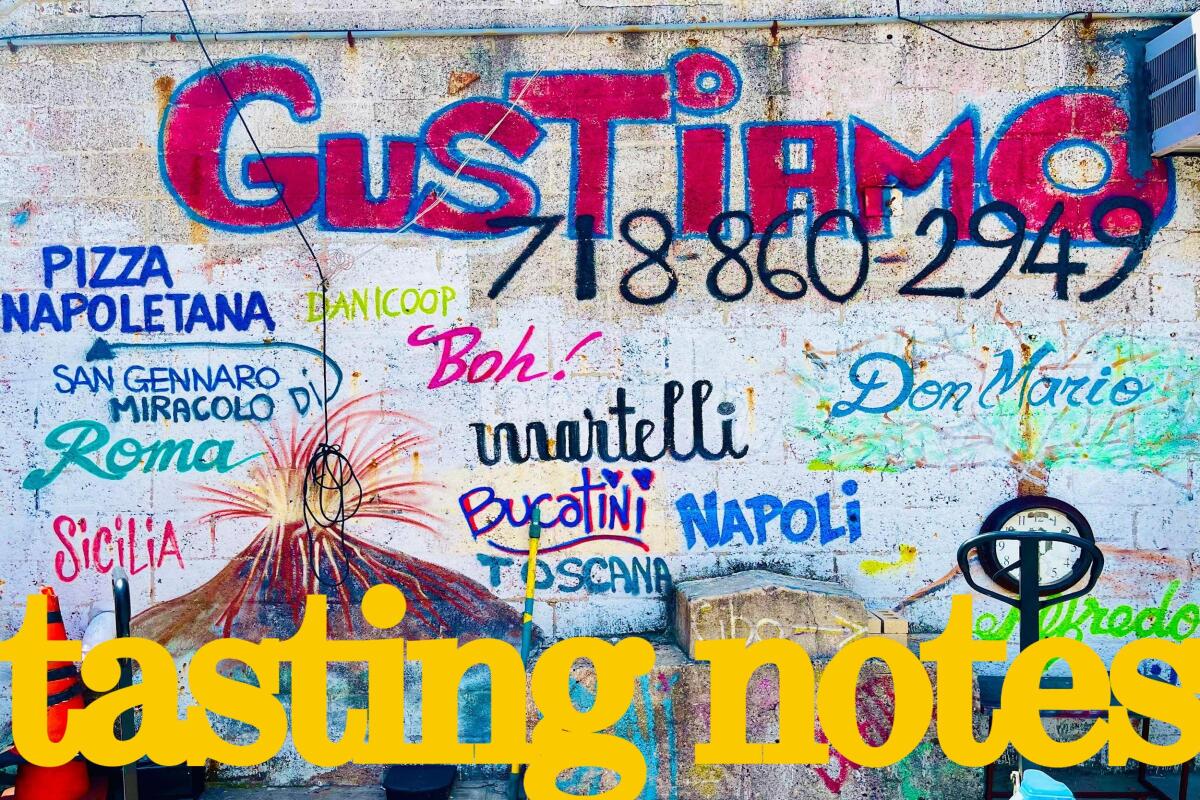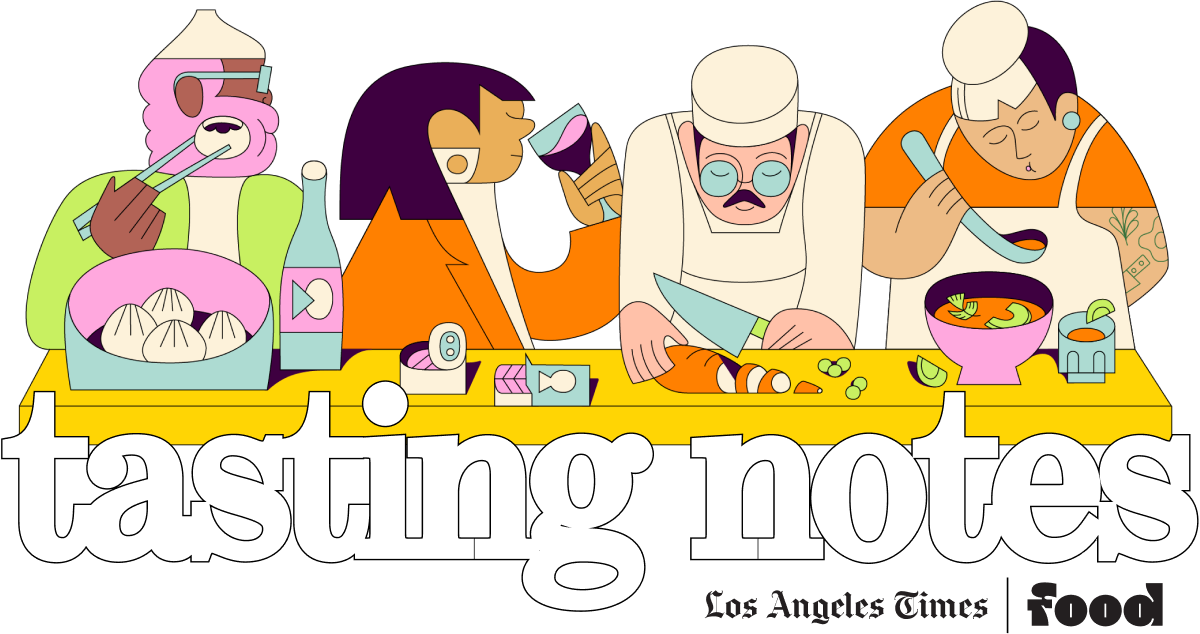Inside the Italian food warehouse every cook should know about

Beatrice Ughiâs Italian connection. Plus, obsessing over chicken rice, how to use extra pumpkin filling, where chefs eat on their night off and how food waste affects climate change. Iâm Laurie Ochoa, general manager of L.A. Times Food, with this weekâs Tasting Notes.
From Italy, with love

Many people are spending Black Friday weekend on the websites of big-box retailers purchasing refrigerators, stoves and other major appliances that could be hit with big tariffs in the next administration. Iâve been doing some of my pre-tariff shopping on Gustiamo, the Italian food website run by Beatrice Ughi.
For one thing, I want to be sure I have plenty of Maida Farmâs jarred yellow tomatoes, a quick-cooking, sweet heirloom variety â pomodoro lungo giallo di Capaccio â grown near the temples of Paestum and within Campaniaâs so-called mozzarella belt, where bufala cheese makers and sellers dot the SS18 highway, including the wonderful Tenuto Vannulo, where the buffalo listen to Mozart. (When I asked Tenuto Vannuloâs patriarch Antonio Palmieri why Mozart was chosen, he said with a twinkle in his eye, âMozzarella? ... Mozart!â)
Maida Farmâs yellow tomatoes are just one of hundreds of artisanally grown and produced foods from Italy that Ughi sells on the Gustiamo website. Last year, I had the chance to visit Ughi at the Bronx headquarters of Gustiamo and got a whirlwind look at the abundance Ughi has been bringing from Italy since 1999.
âLook, this is sea salt from Trapani,â she says, explaining that since the Sicilian salt is hand-harvested it doesnât go through machinery that would require it to be washed. âIt tastes different â it really does.â
âAnd these are La Nicchia caperberries from the volcanic island of Panelleria,â she says. âThe seeds are so small and delicate. Weâve been working with the family for 20 years.â
Walking down an aisle of stacked cans and bottles, she points out San Marzano tomatoes, extra-virgin olive oil, more tomatoes ... coffee from Verona, beautiful jars of preserved broccoli rabe and trimmed artichokes, more tomatoes. Honey bottled in an ecological mudbrick space. Every item has a story.
Then she turns a corner to an open area where two folding tables have been joined to make a dining table. Several mismatched chairs, two that look as if they would make great antique finds and a few wobbly office chairs on wheels, have been arranged around the table. At every spot is a plate of pasta cooked with Salsa Pianogrillo â âthe best ready-to-use tomato sauce weâve ever tried,â says Gustiamoâs website copy. A green salad has been set at each end of the table and in the middle is a board with chunks of red cow Parmigiano Reggiano cheese. Itâs lunchtime at Gustiamo.
I canât say they bring out the 24-month red cow cheese at every lunch break, but Ughi and her team do spend a lot of time tasting and testing the foods they sell and traveling to Italy to meet the farmers and producers. On this day, the team was tasting two products out of Lombardy: Marco Colzaniâs chocolate hazelnut spread and his pistachio cream, which work as well for accomplished bakers wanting to level up their desserts as they do for the rest of us looking for something great to spread on our morning toast.
This time of year, the Gustiamo site is geared up for the holidays with lots of gift baskets and, of course, panettone and the holiday bread known as âbread of gold,â or pandoro, which originated in Verona.
But the Gustiamo product I think about most is the Noto Romano variety of almond that Sicily chef Corrado Assenza helped save from extinction â a story detailed in the pastry season of âChefâs Table.â
Unlike California almonds, Romano almonds grow with very little water and have a harder shell than the almonds we usually find in supermarkets. (If only we could find a way to grow these almonds in our water-challenged state.)
The varietyâs stronger almond flavor is essential to the classic granita Assenza sells at his Caffè Sicilia in Noto. When Ughi brought Assenza to Los Angeles for two guest chef dinners, one through Silvia Carluccioâs event and cooking class hub Impastiamo and one at David Tanisâ Lulu restaurant at the Hammer Museum, the mealâs high point was the almond granita served as the final course. There was an intensity to the icy almond dessert that I had never experienced. I wanted to taste it again. And though visiting to Sicily isnât something I can do soon, I can order the almonds either peeled or as an almond spread, which can be transformed into granita, as Gustiamo explains on its website. Itâs one way Ughiâs Gustiamo makes the world a bit more accessible.

Chicken rice love

Food columnist Jenn Harris dedicated her most recent weekly dispatch to one of my favorite foods: chicken rice. She gives proper love to Savoy Kitchen, my favorite of our local chicken rice restaurants, and respect to Pasadenaâs Cluck2Go, which is my go-to spot for an easy and delicious weeknight dinner. Sheâs also found two places I havenât yet been: chef Hong Xiaoâs Hong Coffee and Bakery in Monterey Park and West Covinaâs Burd Chicken Rice, which Harris says is âinspired by bai mon, the chicken-and-rice dish found all over Cambodia.â Once I get through my leftover turkey, Iâm going out for chicken.
Youâre reading Tasting Notes
Our L.A. Times restaurant experts share insights and off-the-cuff takes on where theyâre eating right now.
You may occasionally receive promotional content from the Los Angeles Times.
Also ...
- If you bought too much pumpkin puree for Thanksgiving, cookbook author Kiano Moju (âAfriCali: Recipes From My Jikoniâ) has an excellent use for it: pumpkin chapati. She came to the L.A. Times Test Kitchen and showed us how easy it is to make for our Book to Cook video series.
- At our most recent Food Bowl festival, chefs from all over were captured on video telling us where they like to eat on their nights off. Assistant food editor Danielle Dorsey compiled their responses into a mapped guide to some excellent eating.
- Kate Linthicum writes that an estimated 316 million pounds of food were thrown out on Thanksgiving in the U.S. and looks at the ways that waste fuels climate change.
- Cookbook author Beth Dooley wrote about the indigenous tepary bean, which is grown in low-water, high-heat regions and is more widely available in supermarkets and online.
- Finally, since the reveal party for this yearâs 101 Best Restaurants in L.A. is being held in a larger space than usual, there are still tickets remaining for the Dec. 3 event at the Hollywood Palladium. Until Dec. 1, you can buy two tickets for the price of one.
Eat your way across L.A.
Like what you're reading? Sign up to get it in your inbox every week.
You may occasionally receive promotional content from the Los Angeles Times.

Eat your way across L.A.
Get our weekly Tasting Notes newsletter for reviews, news and more.
You may occasionally receive promotional content from the Los Angeles Times.




